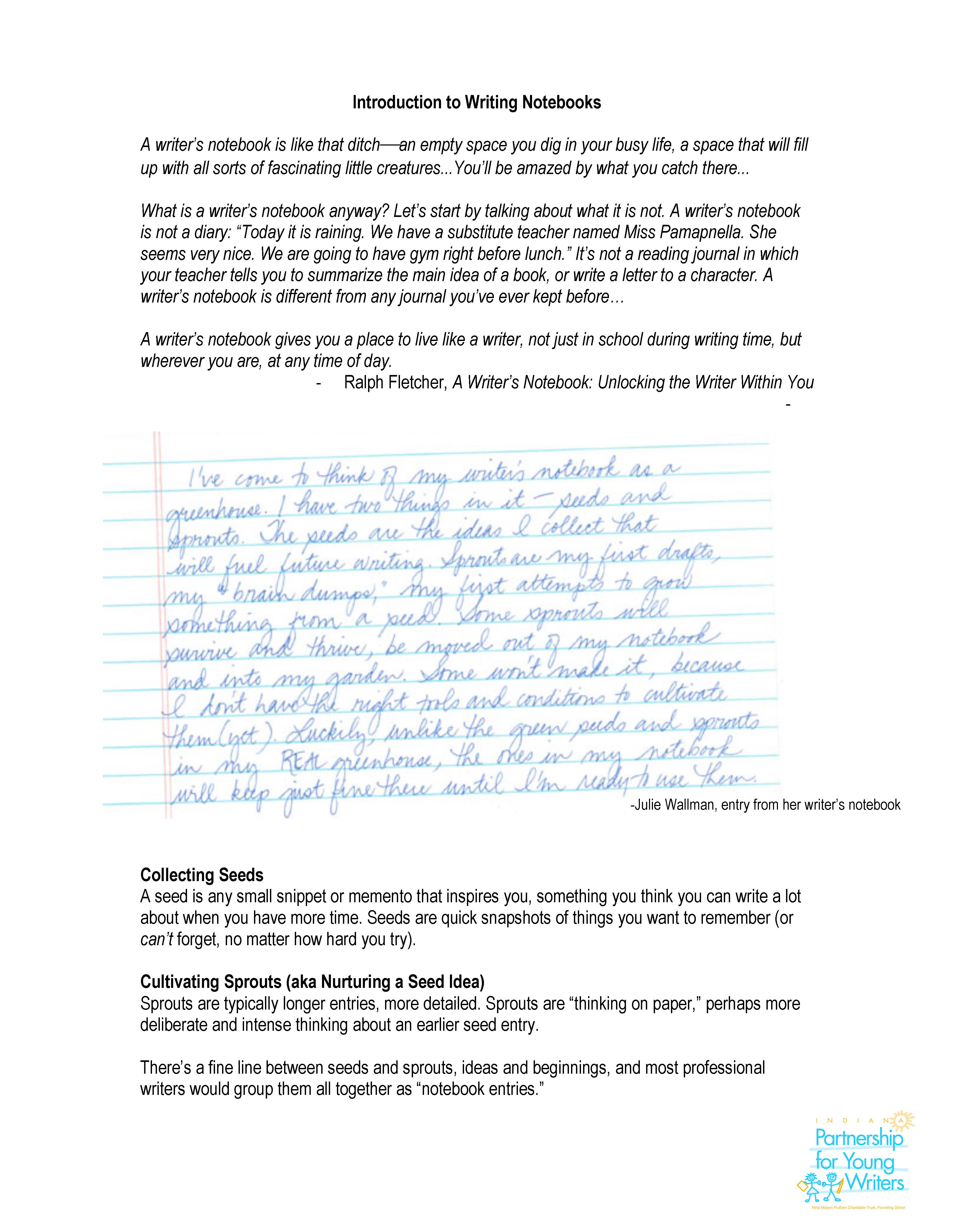As in other genre studies, we devote a total of roughly 5-7 days to generating notebook entries that will reveal ideas or themes to explore in a memoir, then choosing one idea or theme and nurturing it to uncover more of what we might say about it. As the name “memoir” might suggest, writers of memoir recall and analyze their memories, exploring the significance of various people, places, events, objects, or time periods in their lives.
Writing a memoir can be as much psychological work as it is work with language and writing craft strategies. This analytical component is largely what differentiates memoir from personal narrative, but students may not be used to reflecting on life experience in this way. During the idea generation phase, we can teach strategies that help students recall memories—creating a timeline of our life’s events or looking closely at a photograph from our life, for example—and demonstrate how we might reflect on these to reveal and expand ideas. The memoirist is asking and answering questions such as What has made me who I am/who I was? Why is X such a vivid memory for me? What effect did Y have on me?
Once students have a handful of entries about memories and significant people, places, or events from their lives in their notebooks, they can begin to look for themes that recur, as this is often a sign of good memoir material. Students can draw on material in their notebooks that they generated in other genres or personal time as well, as it’s helpful to have a lot of entries to consider. Are there lots of entries that include your grandmother? Your home on Park Street that you left last year? Your asthma diagnosis? Once a theme or idea begins to emerge, students will need additional strategies to help them uncover what, exactly, they have to say about the topic to develop it into a single narrative or connected shorts. You’ll need to teach strategies that help students dig deeper.
Towards the end of this part of the unit, you may notice an organic shift towards “planning” for the first full draft. Students can spend time revisiting memoirs they were drawn to during the immersion phase, paying special attention to the structures memoirists used to organize their text. Help students notice how published memoirs begin and end, then think about which structure(s) best fit their own emerging memoirs. You might notice, for example, that many memoirs have a “circle structure”; that is, they begin and end at the same place, or with the same line/thought/image. Some start when the writer is young and end with the older, wiser writer thinking back on the memory to draw a conclusion about it. This is where continued immersion and “reading like a writer” come into play. Writers will be looking at touchstone texts to answer questions such as, How did other Author X connect the stories about his grandma?
Teacher Try-It #1:
Choose a few strategies from the documents below titled “Notebooks & Generating Ideas” and “Memoir Notebook Entries” and create your own notebook entries. These will be valuable in demonstration minilessons and student conferences throughout the unit. Remember that even though you may be capable of simply choosing strategies from a list like this, you’ll want to instead present 1-2 strategies per day as a demonstration minilesson in class. You might build a list like this in class based on what you teach and observe in touchstones, but you wouldn’t simply give a photocopy of an existing list to students as a starting point.
Teacher Try-It #2:
What ideas and themes do you notice recurring in your own notebook entries? Was there a subject that stood out because of the volume of writing you were able to produce about it? Choose something from your initial entries to develop further. Notice what helps you uncover more to say—whatever works for you, personally, will make an excellent minilesson for you to teach students.
Previous ChapterImmersion Next Resource
Drafting






